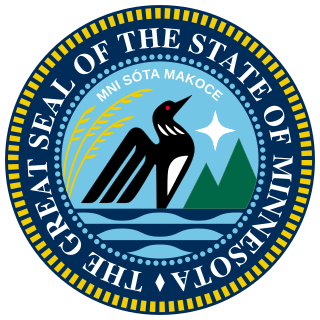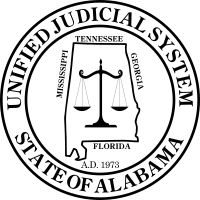In the United States, a state supreme court is the highest court in the state judiciary of a U.S. state. On matters of state law, the judgment of a state supreme court is considered final and binding in both state and federal courts.
The government of California is the governmental structure of the U.S. state of California as established by the California Constitution. California uses the separation of powers system to structure its government. It is composed of three branches: the executive, consisting of the governor of California and the other constitutionally elected and appointed officers and offices; the legislative, consisting of the California State Legislature, which includes the Assembly and the Senate; and the judicial, consisting of the Supreme Court of California and lower courts. There is also local government, consisting of counties, cities, special districts, and school districts, as well as government entities and offices that operate independently on a constitutional, statutory, or common law basis. The state also allows direct participation of the electorate by initiative, referendum, recall and ratification.

The government of Maryland is conducted according to the Maryland Constitution. The United States is a federation; consequently, the government of Maryland, like the other 49 state governments, has exclusive authority over matters that lie entirely within the state's borders, except as limited by the Constitution of the United States.

The Supreme Court of Alabama is the highest court in the state of Alabama. The court consists of a chief justice and eight associate justices. Each justice is elected in partisan elections for staggered six-year terms. The Supreme Court is housed in the Heflin-Torbert Judicial Building in downtown Montgomery, Alabama.
The Texas Courts of Appeals are part of the Texas judicial system. In Texas, all cases appealed from district and county courts, criminal and civil, go to one of the fourteen intermediate courts of appeals, with one exception: death penalty cases. The latter are taken directly to the Texas Court of Criminal Appeals, the court of last resort for criminal matters in the State of Texas. The highest court for civil and juvenile matters is the Texas Supreme Court. While the Supreme Court (SCOTX) and the Court of Criminal Appeals (CCA) each have nine members per the Texas Constitution, the sizes of the intermediate courts of appeals are set by statute and vary greatly, depending on historical case filings and so that the justices on each court can timely adjudicate the volume of cases regularly before them. The total number of intermediate appellate court seats currently stands at 80, ranging from three, four, six, seven, nine, and thirteen (Dallas) per court.

The Oklahoma Court System is the judicial system for the U.S. State of Oklahoma. Based in Oklahoma City, the court system is a unified state court system that functions under the Chief Justice of Oklahoma who is its administrator-in-chief.

The Oklahoma Court of Criminal Appeals is one of the two highest judicial bodies in the U.S. state of Oklahoma and is part of the Oklahoma Court System, the judicial branch of the Oklahoma state government.
The Government of the Commonwealth of Pennsylvania is the governmental structure of the Commonwealth of Pennsylvania as established by the Pennsylvania Constitution. It is composed of three branches: executive, legislative and judicial. The state capital of Pennsylvania is Harrisburg.

The Minnesota Court of Appeals is the intermediate appellate court in the U.S. state of Minnesota. It began operating on November 1, 1983.

The Oklahoma Court of Civil Appeals is an intermediate appellate court in the state of Oklahoma. Cases are assigned to it by the Oklahoma Supreme Court, the state's highest court for civil matters.

The government of Arizona is the governmental structure of the state of Arizona as established by the Arizona Constitution. The executive is composed of the Governor, several other statewide elected officials, and the Governor's cabinet. The Arizona Legislature consists of the House of Representatives and Senate. The judiciary is composed of the Arizona Supreme Court and lower courts. There is also local government, consisting of counties, municipalities and special districts.

The government of the U.S. state of Kansas, established by the Kansas Constitution, is a republican democracy modeled after the Federal Government of the United States. The state government has three branches: the executive, the legislative, and the judicial. Through a system of separation of powers, or "checks and balances," each of these branches has some authority to act on its own, and also some authority to regulate the other two branches, so that all three branches can limit and balance the others' authority.
The Government of Guam (GovGuam) is a presidential representative democratic system, whereby the president is the head of state and the governor is head of government, and of a multi-party system. Guam is an organized, unincorporated territory of the United States with policy relations between Guam and the US under the jurisdiction of the Office of Insular Affairs.

The Supreme Court of Mississippi is the highest court in the state of Mississippi. It was established in 1818 per the terms of the first constitution of the state and was known as the High Court of Errors and Appeals from 1832 to 1869. The court is an appellate court. The court consists of nine justices elected in nonpartisan contests from three districts to serve eight-year terms. The most senior justice serves as the chief justice. It is housed in the Carroll Gartin Justice Building in Jackson, Mississippi, the state capital.

The Alabama Circuit Courts are the state trial courts of general jurisdiction in the State of Alabama. The Circuit Courts have jurisdiction to hear civil and criminal cases. For civil cases, the courts has authority to try cases with an amount in controversy of more than $3,000 and has exclusive original jurisdiction over claims for more than $10,000. The Circuit Courts are the criminal trial courts for most felony charges, and for some misdemeanors and lesser included offenses. The Circuit Courts also have appellate jurisdiction over certain cases arising from the Alabama District Courts.

The Alabama Court of Criminal Appeals is one of two appellate courts in the Alabama judicial system. The court was established in 1969 when what had been one unitary state Court of Appeals was broken into a criminal appeals court and a civil appeals court. The unitary Court of Appeals had been operative since 1911. The Court of Criminal Appeals is the linear descendant of the unitary Court of Appeals as its predecessor judges were automatically assigned to the Court of Criminal Appeals in 1969. At that time the court only had three judges, but that was changed to five in 1971. The court is housed in the Heflin-Torbert Judicial Building in downtown Montgomery, Alabama.
Craig Sorrell Pittman was a judge of the Alabama Court of Civil Appeals from 2001 until his retirement at the end of his most recent term on January 11, 2019.
Scott William Donaldson is a Former Judge of the Alabama Court of Civil Appeals.
Terri Willingham Thomas was a Judge of the Alabama Court of Civil Appeals from 2007–2019.

The 2022 Alabama elections were held on Tuesday, November 8, 2022. The primary elections were held on May 24, 2022, with runoffs taking place on June 21, 2022.










